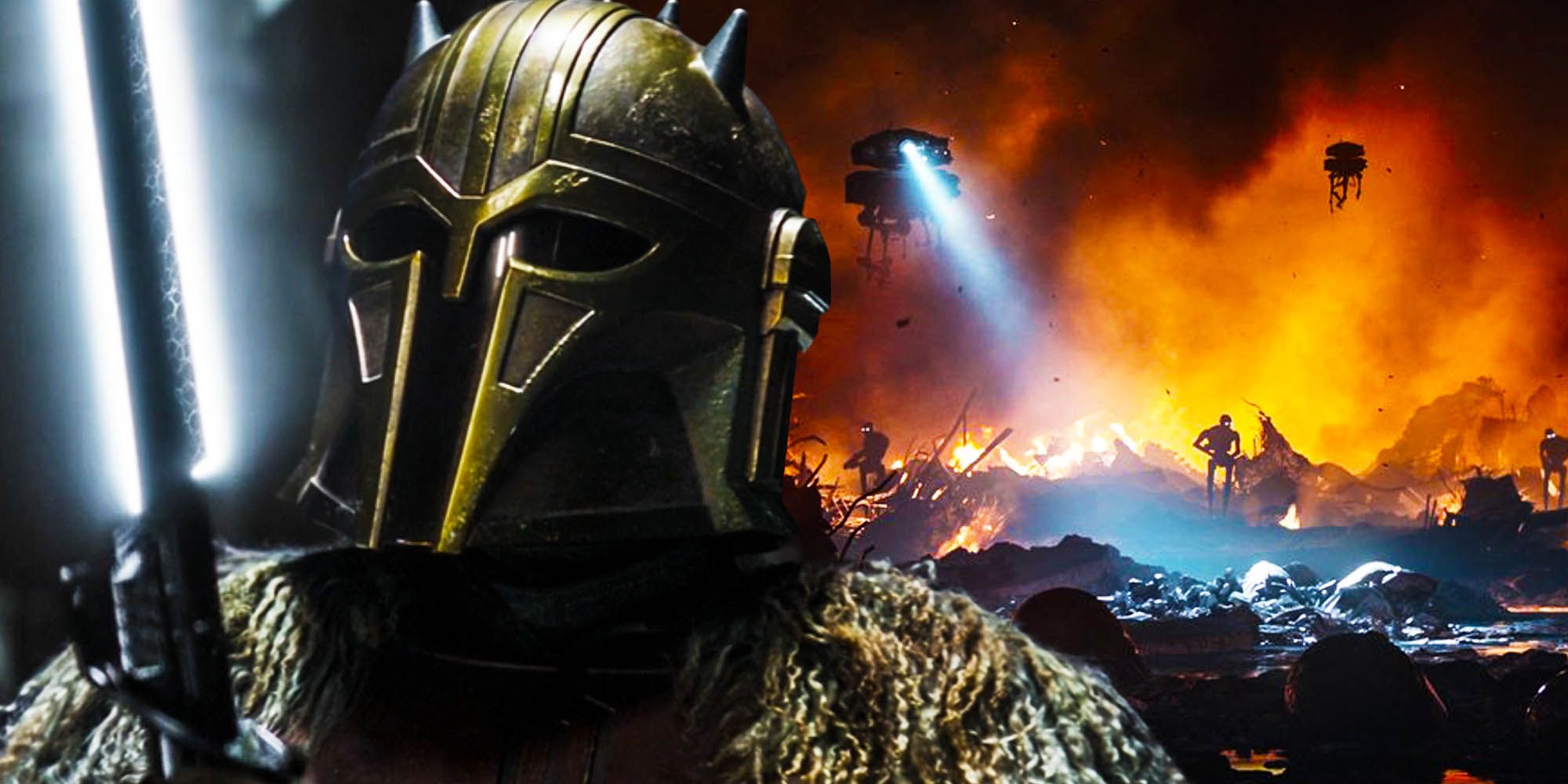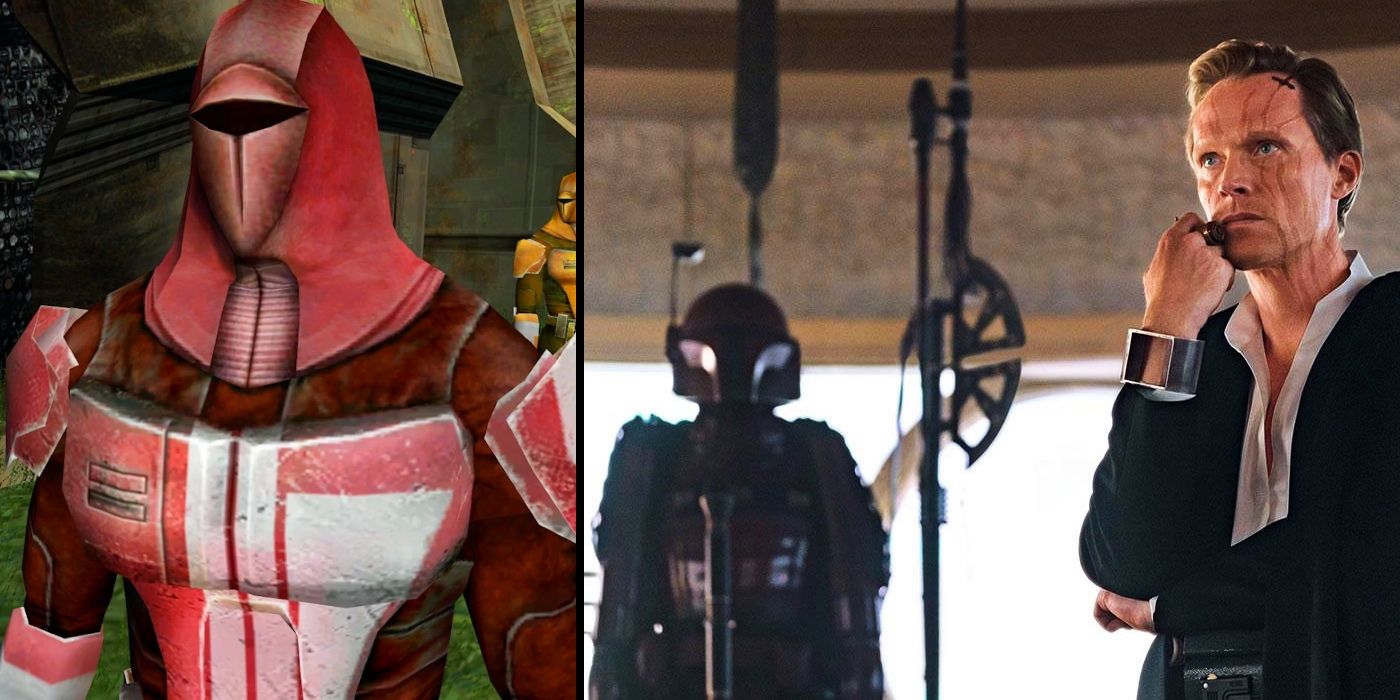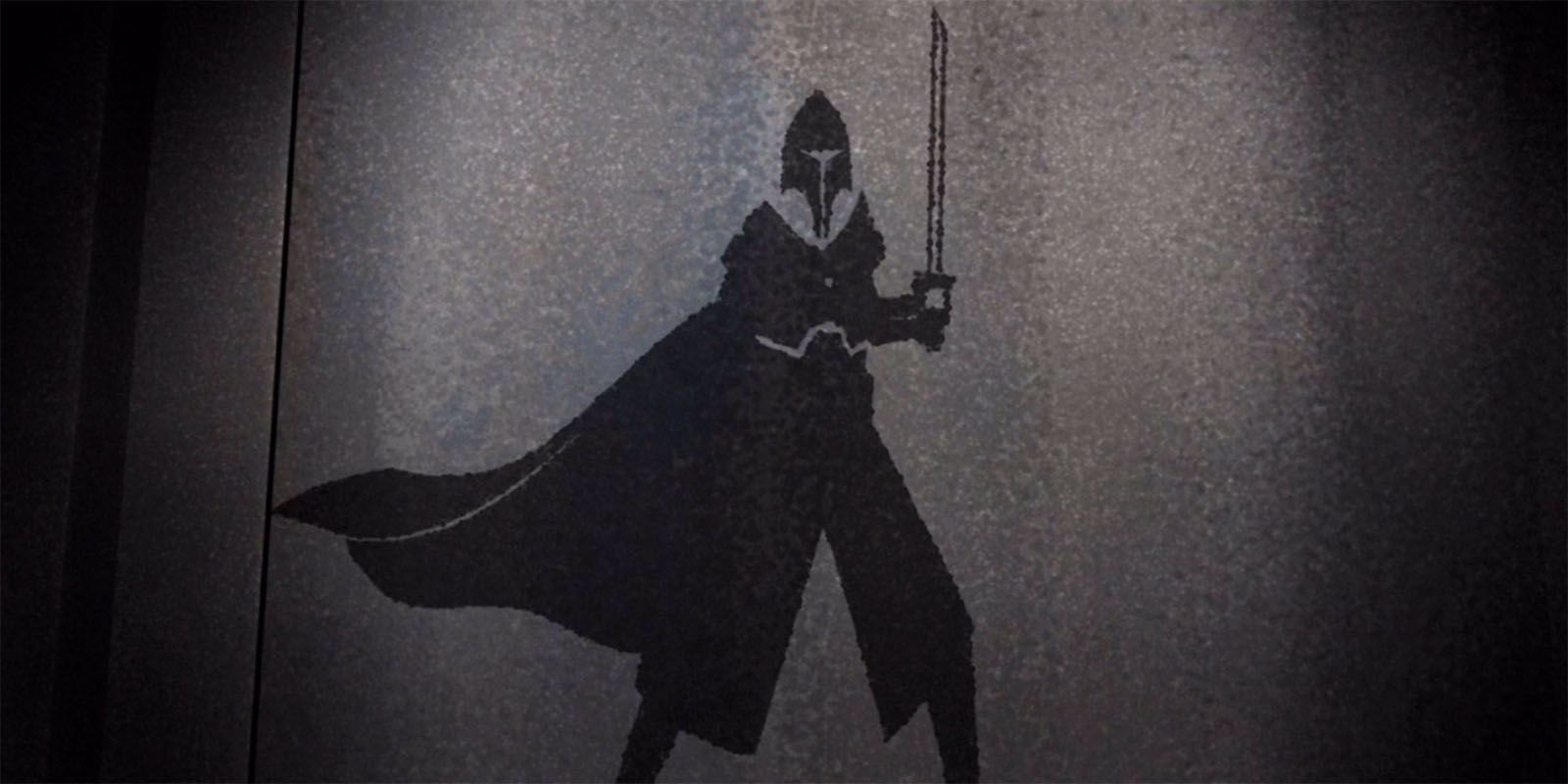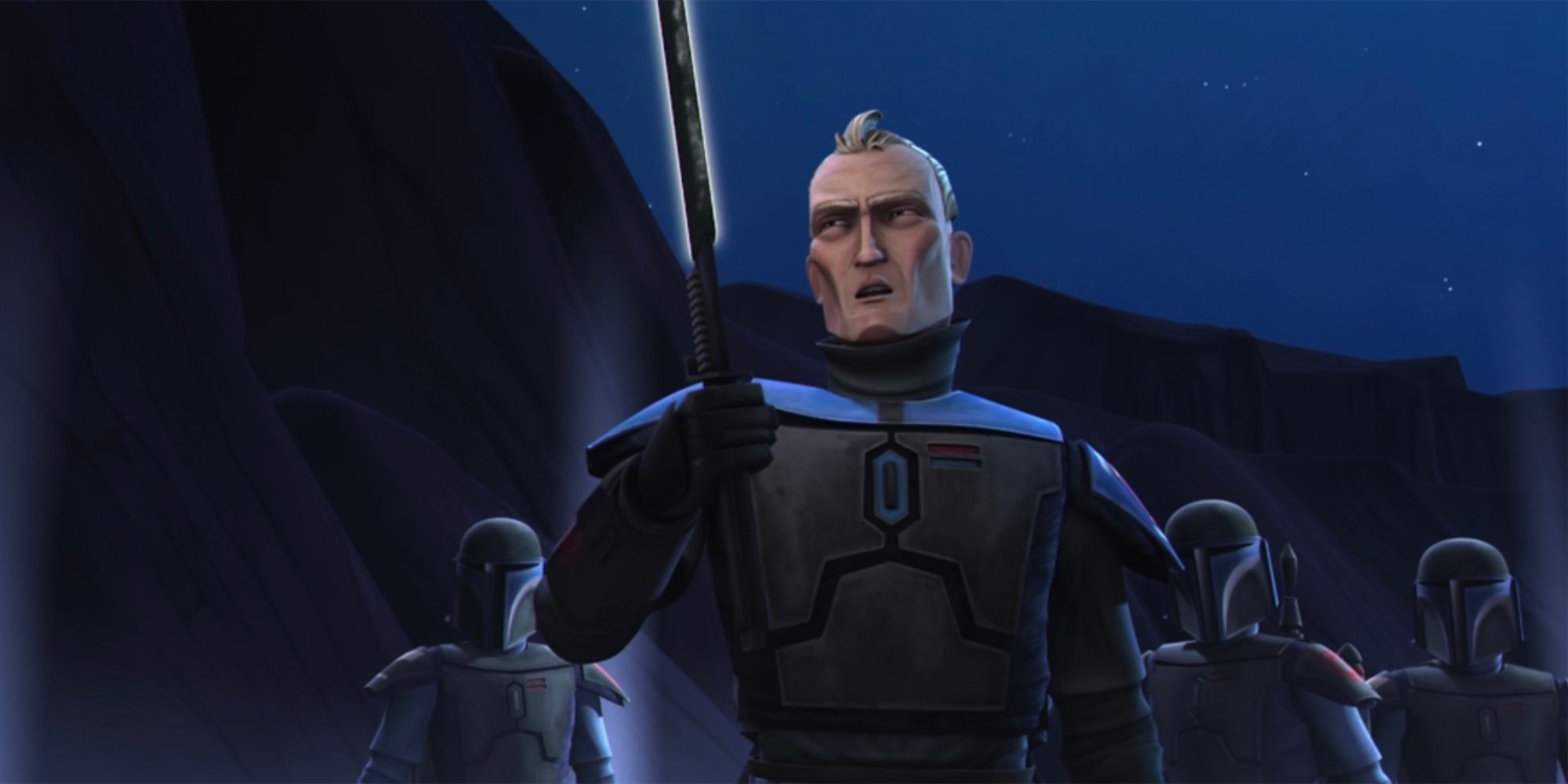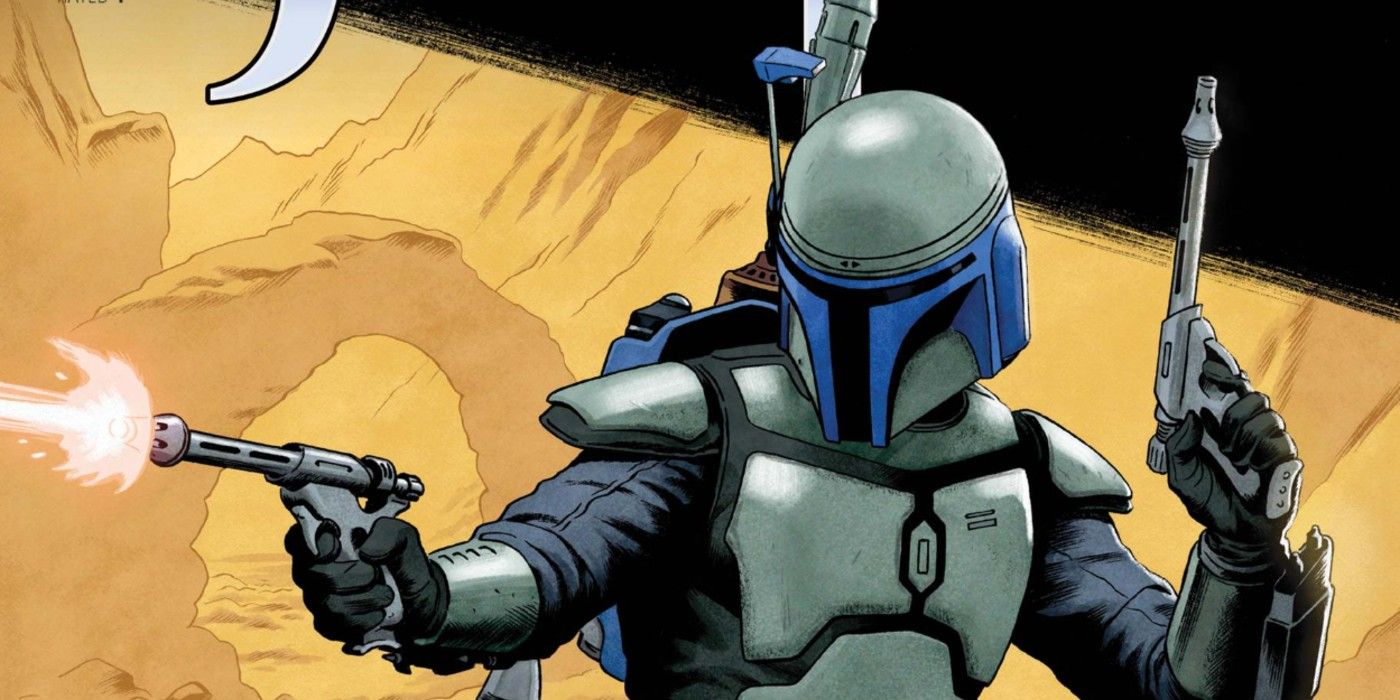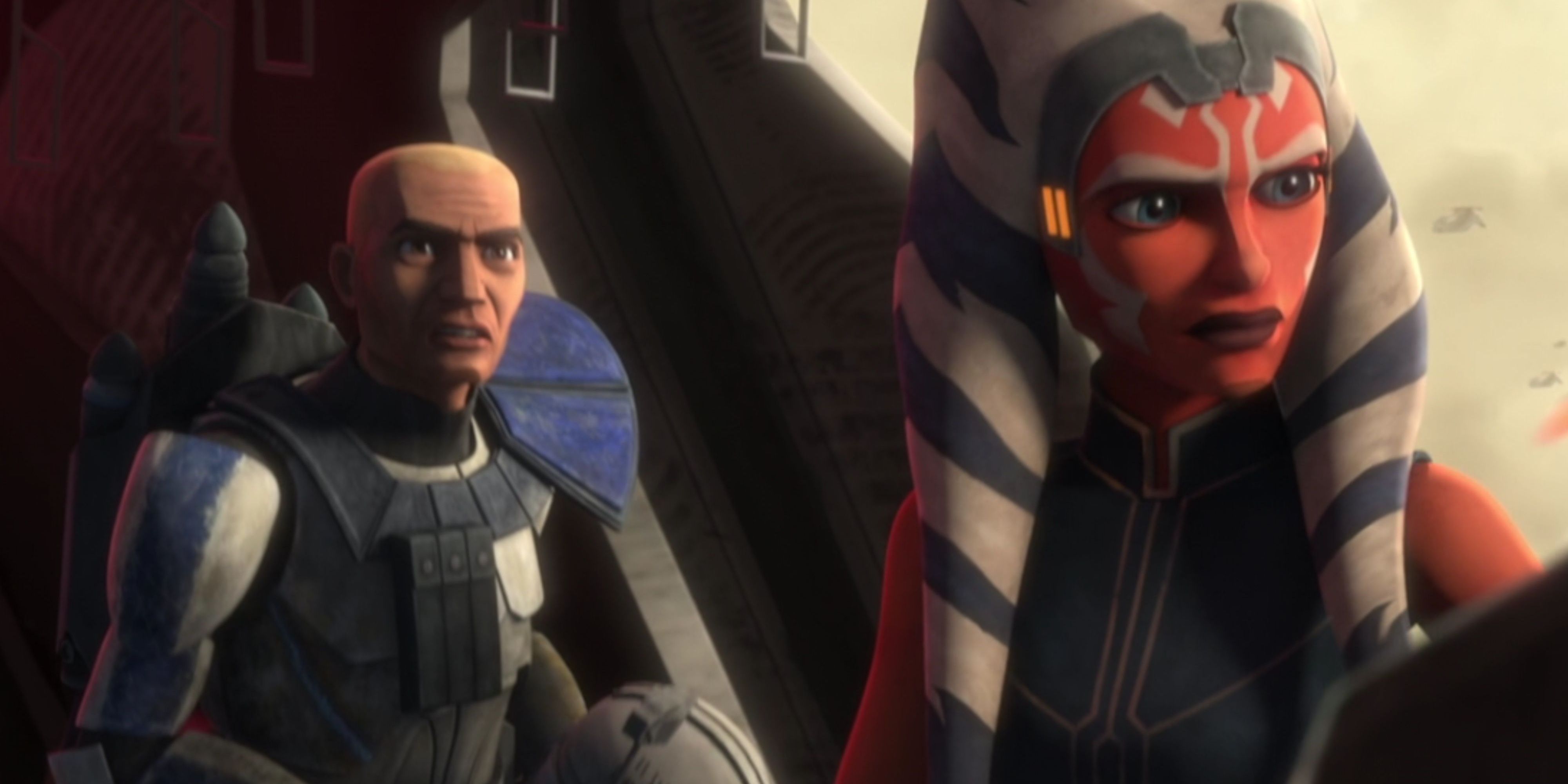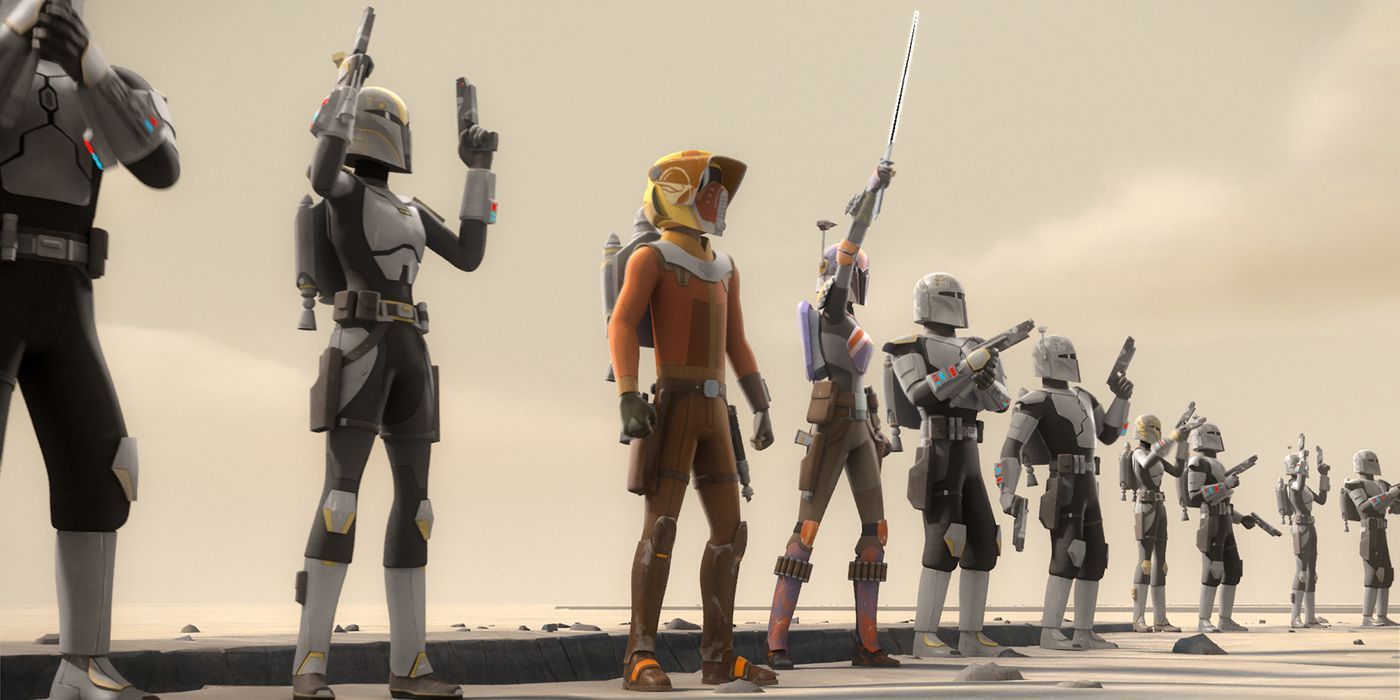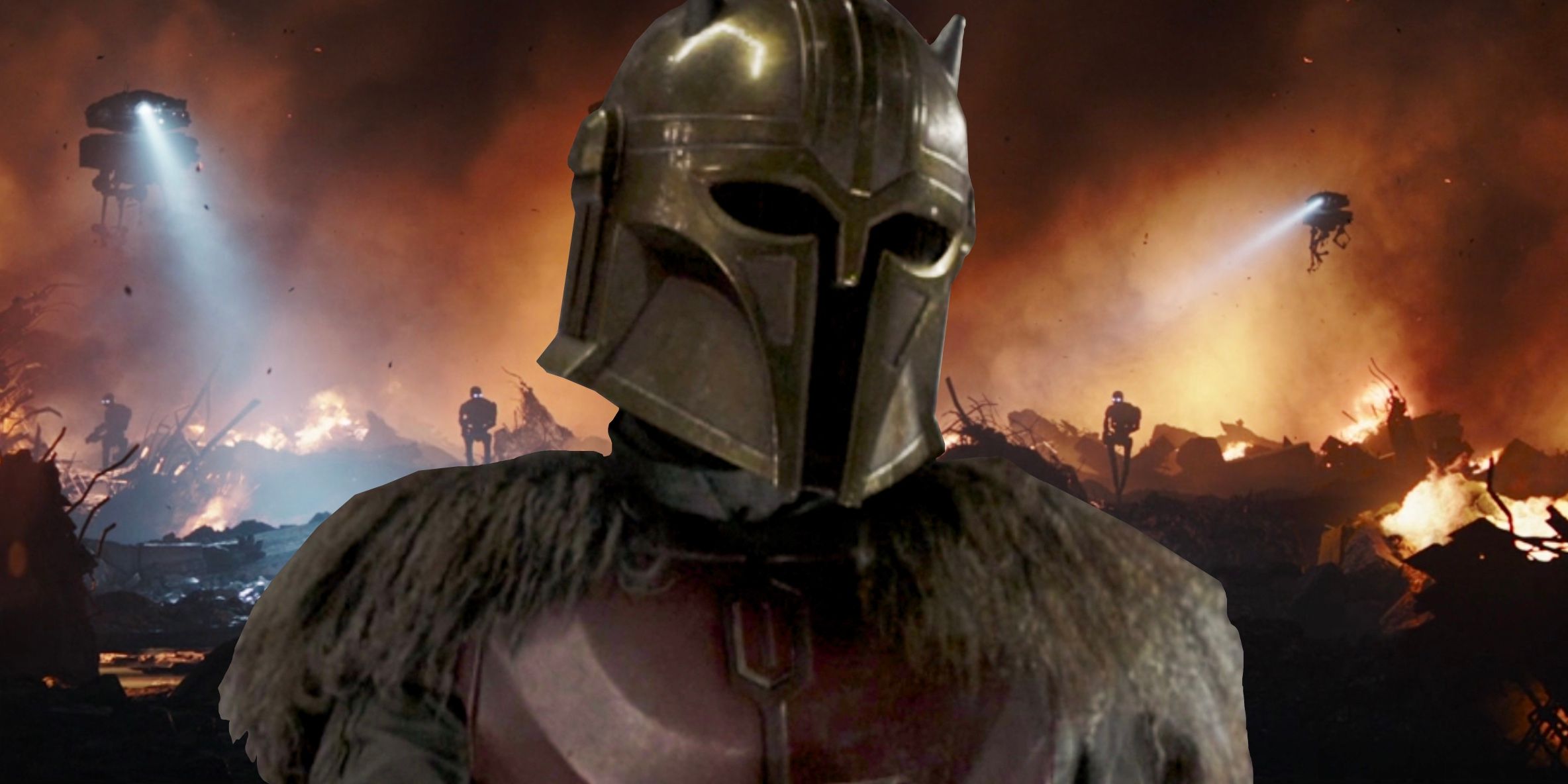Warning: Spoilers ahead for The Book of Boba Fett episode 5.
The Book of Boba Fett devoted its fifth episode to the continued adventures of Din Djarin, a Mandalorian bounty hunter who’s part of a 10,000 years old warrior culture. Mandalorians have a rich history in both canon and Legends, with Star Wars: The Clone Wars, Star Wars Rebels, and The Mandalorian delving into the storied history of the warriors in the new timeline, taking heavy inspiration from the Star Wars franchise’s original continuity. While they aren’t Force users like the Jedi and Sith, Mandalorians are among the galaxy’s finest warriors and their lack of Force sensitivity (in most cases) affords them a degree of moral complexity that Force users rarely exhibit.
Mandalorian culture was first hinted at by the Legends-era novelization of The Empire Strikes Back, which featured Boba Fett (a true Mandalorian in the Legends continuity) who wore a suit of armor associated with a culture of warriors who once fought against the Jedi. Marvel’s classic Star Wars comics were among the first properties to truly delve into Mandalorian culture, introducing Fenn Shysa, a benevolent warrior (despite his past affiliation with the CIS) who Boba Fett would one day succeed as Mand’alor (ruler of all Mandalorian clans). The Legends-era work of Karen Travis often placed Mandalorians in protagonist roles, and her novels excellently deepened the history and intricacies of Mandalorian culture in the Legends timeline.
The canon Star Wars timeline significantly reimagined Mandalorian culture and history, beginning with The Clone Wars, though elements of the Legends iteration were reintroduced over time. Although Mandalorians lore was created for Boba Fett, the canon timeline makes him an unaffiliated mercenary who wears his iconic beskar armor to honor his father (and take advantage of its astounding usefulness in combat). The canon universe’s Jango Fett was initially an ordinary bounty hunter in Mandalorian armor as well, but The Mandalorian restored much of his Legends-era backstory, making him a true Mandalorian warrior once more. The Mandalorian has proven to be one of the Star Wars franchise’s most popular properties, renewing and increasing interest in the culture’s 10,000-year history.
Mandalorians' Origins & 10,000 Year History In Star Wars
Although Mandalorians haven’t shaped galactic history nearly as much as Jedi and Sith, their culture predates the Galactic Republic. Mandalorians are famous for their lightsaber-resistant, weapons-laden suits of armor, and culture of warfare. Originating on Mandalore, an Outer Rim world, Mandalorians conquered surrounding worlds, forming the Mandalorian sector of the Outer Rim. The many Mandalorian crusades were extremely destructive, oppressing the Ubdurian species and irreparable damage to the planet Concord Dawn. Mandalorians also famously rode mythosaurs — massive reptiles whose skulls became an iconic Mandalorian symbol.
Tarre Vizsla: The First Mandalorian Jedi
Understandably, the destructive crusades of the Mandalorians often put them at odds with the Jedi Order, whose knights sought to keep the galaxy in peace and protect the innocent. Moreover, Mandalorian culture was defined by its emotional and familial connections, which the Jedi Order forbade among its members. Despite this, a Mandalorian named Tarre Vizsla became the first Mandalorian Jedi Knight. Somehow reconciling his conflicting culture, Vizsla crafted a unique black-bladed lightsaber called the Darksaber, a weapon as unique as he was. Tarre Vizsla eventually became the Mand’alor and likely found a way to control without suppressing his emotions and connections, combining the best aspects of his cultures. After Vizsla’s death, his descendants stole the Darksaber from the Jedi Temple, making the weapon a symbol of Mandalorian leadership that must be won in combat.
The Mandalorian-Jedi War Explained
As the animosity between the Jedi and Mandalorians worsened, their constant conflicts resulted in the Mandalorian-Jedi War. As stated in The Clone Wars and Rebels, the Mandalorians lost the war, with the Jedi not only putting an end to their devastating crusades but also having their homeworld of Mandalore ravaged by their weaponry. Mandalore likely resembled its Legends counterpart, whose terrain was varied, but the end of the Mandalorian-Jedi War turned the planet into a barren desert, requiring domed cities for the Mandalorian population to survive. Like in Legends, the war might have also resulted in the once-united Mandalorian society dividing into various clans.
The Mandalorian Civil War Explained
The Mandalorian clans inevitably went to war with each other in what became known as The Mandalorian Civil Wars. If the Legends timeline and Boba Fett’s The Mandalorian dialogue are any indications, this war was fought between true Mandalorian warriors and the Death Watch terrorist group. Mentored by Jaster Mereel, who may have been the Mand’alor at the time, Jango Fett joined the true Mandalorians as a foundling, earning his iconic suit of beskar armor. The similarly-titled Mandalorian Civil War might have been related to the Civil Wars, with The Clone Wars referencing Mandalorian fundamentalist groups waging war with a fledgling pacifist movement.
Mandalorians During The Clone Wars & Prequel Era
This pacifist regime, known as the New Mandalorians, ruled Mandalore for most of the Clone Wars, but the planet was once more destabilized and ravaged by war when Maul arrived and usurped Pre Vizsla as the leader of Death Watch. Vizsla’s second-in-command, Bo-Katan Kryze, didn’t accept Maul’s rule, leading her and her contingent of Mandalorian warriors to ally themselves with the Republic and the Jedi, resulting in the Siege of Mandalore. In something of a posthumous victory for Jango Fett, his Clone Troopers proved superior to Maul’s Death Watch warriors and won the siege, installing Kryze as Mandalore’s regent. Bo-Katan’s rule was short-lived, however, as Order 66 brainwashed the Clone Troopers to conquer the world in the name of the Empire at the end of the Clone Wars.
Where Are The Mandalorians During The Original Trilogy?
Following the rise of the Galactic Empire, Mandalore was oppressed by Imperial rule, with the fascist regime using loyalist Mandalorians as elite warriors and developing a superweapon that targeted beskar, incinerating anyone wearing Mandalorian armor. With a contingent of warriors allying with the burgeoning Rebellion, another Mandalorian Civil War began, uniting the clans under Bo-Katan Kryze’s rule once more and devasting the Empire’s hold on Mandalore. Although the Mandalorian resistance and Rebel Alliance were victorious, the Empire retaliated with the Great Purge of Mandalore, which further devastated the already war-ravaged world, and killed countless Mandalorians. The surviving Mandalorian clans spread out across the galaxy while the Empire stole much of the planet’s supply of beskar.
What Happened To Mandalore
The Great Purge of Mandalore destroyed the domed cities of the war-torn world, removing the few habitable portions of the planet. Boba Fett found Bo-Katan’s aspirations of ruling Mandalore again dubious, considering the condition the Empire left it in. Din Djarin, similarly, doubts that the mines of Mandalore survived Empire’s bombardment when speaking to The Armorer in The Book of Boba Fett. The state of Mandalore and the survival of its 10,000-year-old culture will likely be further explored in The Mandalorian season 3.
New episodes of The Book of Boba Fett air Wednesdays on Disney+.

